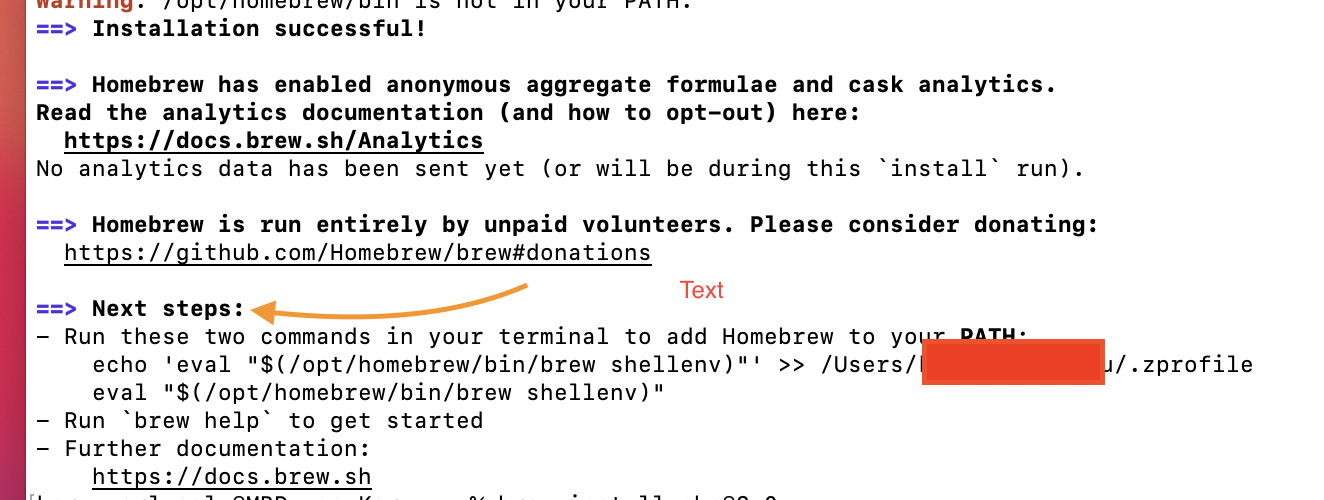

- #Mac brew install docker software#
- #Mac brew install docker download#
Users with a CERN computing account can simply connect to via SSH and start root: the latest stable version is installed as a normal system package. ROOT Docker containers for several linux flavours are available at ROOT’s official DockerHub.įor example, to try out the latest ROOT release just run docker run -it rootproject/root.
#Mac brew install docker software#
This will drop you into a new shell where all software from the prefix is available. $ /cvmfs//lcg/contrib/gentoo/linux/x86_64/startprefix To create a new conda environment containing ROOT and activate it, execute Condaįor any Linux distribution and MacOS, ROOT is available as a conda package. If you package ROOT and would like to be added to the list below, please contact us by clicking the letter icon at the bottom of the page. Please go through each package manager’s standard channels to report any related issue. Supported by the community: these packages are not maintained by the ROOT team, but by helpful members of the community. These setup scripts can be found in the ROOT binary release, in the bin directory.įor example, on Ubuntu 20, a user could execute the following bash commands to install ROOT v6.24/02, after installing all required dependencies: Add the ROOT libraries and executables to your environment by sourcing the appropriate thisroot.* script.
#Mac brew install docker download#
Download the release for the desired platform and ROOT version. Install all required dependencies with the system package manager. The steps to install a pre-compiled binary are simple: We distribute pre-compiled ROOT for several major Linux distributions as well as MacOS and (as a beta) Windows. Download a pre-compiled binary distribution In all cases, make sure to always use the most recent ROOT release possible to get the latest bug fixes, features and quick user support. 
Which one is best for you depends on your operating system and usage requirements. There are several ways to install ROOT on your computer: they are all listed in the table of content on the right. ROOT is available on Linux, Mac, and (as a beta release) on Windows.
Download a pre-compiled binary distribution. If your cluster is not running, enter minikube start first. Make sure your cluster is running, you can check with minikube status. Run: cd C:\minikube and enter minikube start Test your cluster commands Open a cmd (search for the app cmd or powershell) Rename the file to minikube.exe and put it in C:\minikube ĭownload the latest minikube-version.exe. Latest Release and download instructions: Kubectl version -client # Client Version: version.Info Minikube version # minikube version: v0.22.3 Kubedaily Community Sponsorship : This site uses Just the Docs, a documentation theme for Jekyll.ĭocker -version # Docker version 17.09.0-ce, build afdb6d4ĭocker-compose -version # docker-compose version 1.16.1, build 6d1ac21ĭocker-machine -version # docker-machine version 0.12.2, build 9371605. Deploy First Pod On OKteto Cloud Using Kubectl. An Introduction to Kubernetes Networking. Interlude - Netfilter and iptables rules. An Introduction to Networking with Docker. Zero Downtime with Rolling and Recreate Updates. sequential breakdown of the Kubernetes Deployment process. Getting Started with Deploying Releases. Creating Services through Declarative Syntax. 
Running Multiple Containers in a Single Pod. Components and Stages Involved in a Pod's Scheduling. Defining Pods through Declarative Syntax. Configuring the security attributes of pods. Interactive Playground To Learn Kubernetes. Looking at Kubernetes from the top of a mountain. CKA / CKAD Certification Workshop Track. Understanding Docker Compose Deep Drive. Installing and Running LXC on Linux Systems. Using userspace tools to manage cgroups and persist changes. Linux namespaces – the foundation of LXC. The OS kernel and its early limitations. Birth Of Containerization ( For Software Industory ).







 0 kommentar(er)
0 kommentar(er)
